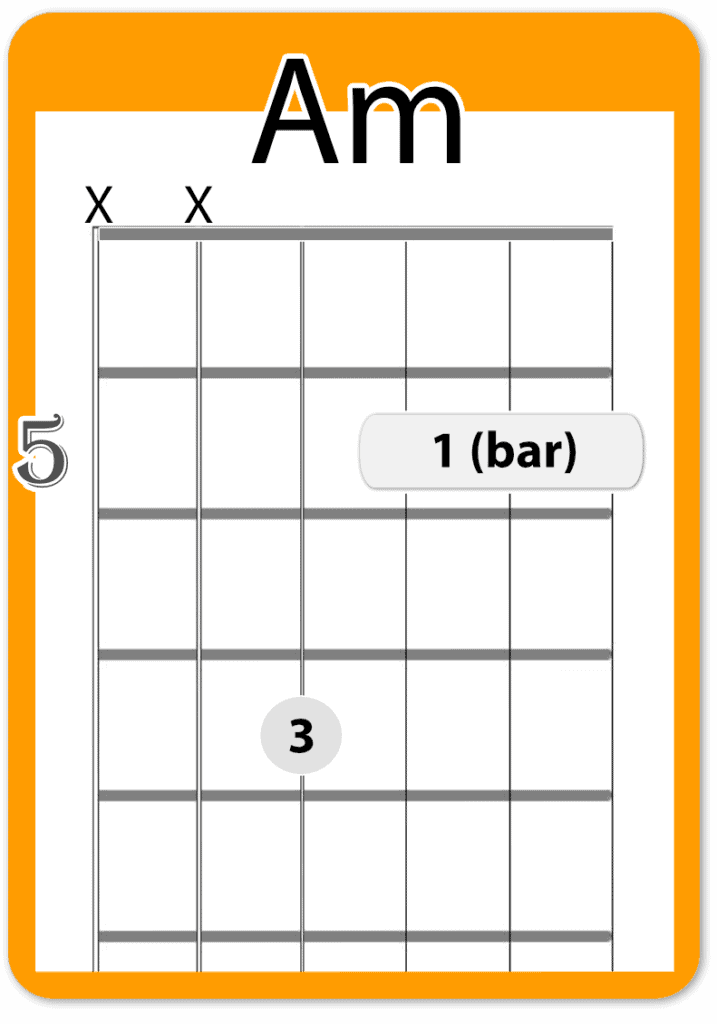Arpeggios are not only pleasing to the ear, but they also offer a fresh perspective on the fretboard.
In fact, studying arpeggios can significantly enhance your ability to improvise. If you're new to arpeggios, they are merely a chord played by strumming each note individually.
The notes may sometimes blend seamlessly into each other and at other times, not. As you'll discover today, arpeggios can also be played in unique and thrilling shapes!
How To Play An Arpeggio
Let’s start by learning 4 arpeggios for chords you probably already know.
These will be higher up on the fretboard than you might be used to. We’ll be using Em, Am, Cmaj7, and B7.

The Em chord is technically an inversion, which means the root note isn’t the lowest note. This is a very useful version of the Em chord I use all the time.
If you were to take your index finger and barre the 7th fret you’d have an Em barre chord!

Here you’ll play the Am chord as a partial barre chord.
If you’re not comfortable with barre chords yet this version is a great way to work up to the full barre chord.
Don’t just think of this as a partial barre chord though. This is a useful chord in itself. If it’s good enough for Jimmy Page to use in Stairway To Heaven, then it’s good enough for me!

This moveable chord shape is one of my favorites voicings of Major 7th chords.
It’s easy to remember since you start with the 1st string, and then go down one string and up one fret until all of your fingers are fretting a note.

Our version of B7 is another moveable chord shape (all have been so far) and also uses a barre.
Just like the Em chord this is an inverted chord since the root isn’t on the bottom. This gives the chord a new flavor, while still being a B7 chord.
All of these chords only use the top 4 strings. We wont care about the 5th or 6th strings here.
Practicing Arpeggios On Guitar
The hardest part about playing arpeggios is changing chords quickly. So spend a couple minutes getting familiar with the chords.
I’ll often encourage students to fret the chords without playing the notes at first. That will help with your muscle memory.
Then start to add in a strum and change chords. Take it nice and low until you get to a point where you can change between the chords reasonably well. Say 80% of the way there.
Now you’re ready to play the arpeggio. Since each chord has 4 notes, play one note per beat starting from the lowest note.
Try doing that on each chord by itself to hear how it sounds. Let every note ring out. Then try to do that while changing chords. Once you’re comfortable with that, start to add in a metronome at a slow tempo.
You probably recognize this pattern if you’ve seen my other lessons. Start with the exercise piece by piece, and slowly build on top of that. Then do it all to tempo. This is the recipe for success in anything you’ll learn on guitar. Keep that in mind.
When you’re feeling pretty good going from low to high, play it high to low.
This will be a new challenge in itself. And do the same thing as before, practice it until you’re feeling 80% of the way there, then add in a metronome at a slow tempo.
Ready for more?
Pretty simple right? Arpeggios are a wonderful way to play through chord patterns to give them a new life and vibe.
If you want more uplifting guitar lessons but aren’t sure where to start or what to focus on, sign up for your FREE guitar success checklist.
You’ll simply answer a few short questions and I’ll send you a personalized report with recommendations on where you personally should spend your time for the quickest progress.




I enjoyed your E Spanish gypsy. I knew it was also Phrygian dominant. BUT…That meant nothing to me !!! You also had a B Harmonic Minor (on the web site. Also kind of a HUH !!! So… you made me do research, and now I got it…mostly ??? Spanish gypsy comes from 5th of Harmonic Minor, with a note sharped (I think)…In the case of E gypsy it’s G to G#
Thanks